On the face of it, Starbucks’ decision to once again require people to spend money before they can take up a seat, or use the bathroom, doesn’t seem like a big deal.
It’s fairly standard practice in food and drink businesses. It was even the policy Starbucks itsel applied, until the controversial arrest of two black men at an outlet in Philadelphia in 2018 – which sparked accusations of racism - led them to change it.
But as minor as the reintroduction of the policy may seem, it has to be seen in the context of a wider attempt by Starbucks to turn around its fortunes.
Because, having seemingly been one of those companies that would just grow and grow forever, it’s been struggling quite a bit in recent years. That’s not to say it’s in imminent danger - we’re still talking about a company that’s making billions of dollars every year.
But instead it’s a business that has started to show signs of stagnation. Its pace of growth has slowed, and the pace at which its opening new shops has declined too. Last year it actually saw its revenues decline.
And that’s led to a dip in its all important share price. The price’s peak was in mid-2021, but within a year it had fallen by more than 40%. It’s recovered a bit since then but is still about 25% lower than its 2021 peak.
That’s despite the fact that it’s still making plenty of money – and it points to a fear that its recent stagnation is the canary in the coal mine, so to speak, and a sign that there’s trouble brewing.
Because if consumers go off a brand like this, or it starts to be seen as old fashioned or poor value for money, there are lots of alternatives waiting to take their custom. And it doesn’t take long for its sales to go into a tailspin, which is a trend that’s hard to break out of once you get stuck in it.
And that’s what they’re now scrambling to try to avoid – which is why we’ve seen them change CEOs almost as often as they change menus in recent years.
They’re now on their fourth CEO in less than three years.
We need your consent to load this rte-player contentWe use rte-player to manage extra content that can set cookies on your device and collect data about your activity. Please review their details and accept them to load the content.Manage Preferences
How did Starbucks get to be such a big company?
Its origins go all the way back to Seattle in the early 1970s – but the original version of Starbucks was focused on selling coffee beans and equipment, rather than food and drink.
It wasn’t until the early 80s, when they hired a marketing and retail director called Howard Schultz, that things started to change.
In 1983 he took a trip to Italy to find some new coffee beans that they could sell – and while there he was exposed to the country’s espresso culture.
Bear in mind that while coffee was already popular in the US, at the time it was very much focused on drip or filter coffee. A restaurant would make coffee by the pot and you’d have it with or without cream or sugar… and that was about it.
But Schultz was convinced that espresso-based drinks – and all of the variants that that allows - could be popular in the US.
The owners of Starbucks weren’t quite so sure – especially because espresso machines were so expensive – and so Schultz ended up leaving and setting up his own café, albeit with investment from Starbucks.
And just two years later, the owners of Starbucks sold their brand to him – as they decided to focus on a different coffee brand called Peets (which is still going today too, but hasn’t had the same international success).
But from those two shops – the café he had set up and the one on Pike Place he acquired with the Starbucks brand – Schultz undertook a really aggressive expansion.
Three years later he had 46 outlets – by the time the company floated on the stock market in 1992, there were around 155.
Its expansion happened to be timed really well too, didn’t it?
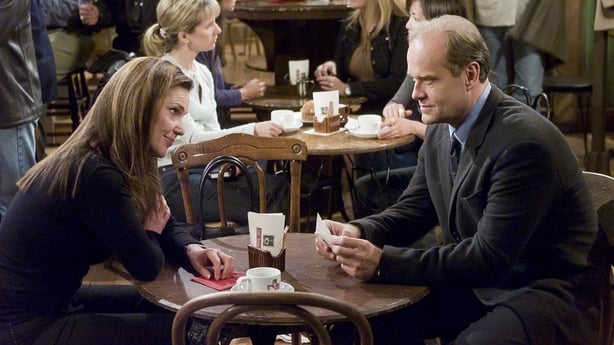
Starbucks’ growth happened at a time when Seattle seemed to be really staking a claim as a great, modern American city.
Around the same time that Starbucks was expanding, Microsoft was becoming a computing powerhouse. Jeff Bezos established Amazon just a few years later in 1994.
Culturally you had the grunge scene, and bands like Pearl Jam, Nirvana and Soundgarden. On TV, Frasier – which had Seattle’s coffee culture deeply embedded within it - started airing in 1993.
All of these factors fed into Starbucks’ early success – because people were taking note of all of these interesting things coming out of Seattle and - as always happens with these trends - they want to ape what the cool kids are doing.
And so when they hear about this Seattle café that’s selling these fancy, European-sounding drinks like, they want in on it.
And that gave Starbucks a lot of credibility, and it meant they were pushing an open door when it came to expanding further.
Through new openings and acquisitions of other chains, it had 677 stores by 1995.
A year later it opened its first non-US store in Japan – and then an international expansion really took off.
By 2000 it had 3,500 stores – by 2005 it was more than 10,000.
And you can keep following that upward trend through to its latest results at the end of October, where it said it had nearly 40,200 stores worldwide.
So what’s gone wrong for them?
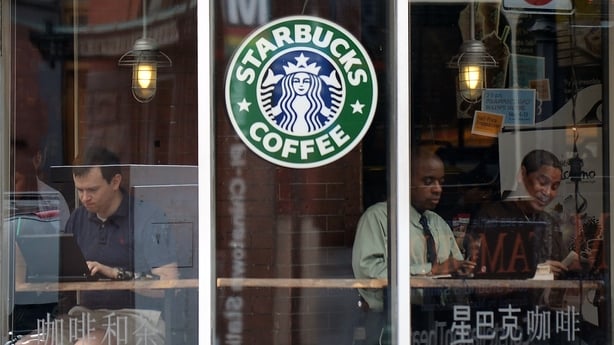
Like all of these things, there’s no one reason for them stagnating – it’s a coming together of problems. In a way, that makes it harder for them to fix.
But really at the heart of it is the fact that they’ve lost their way in what they offer to customers.
Because one of Howard Schultz’s core principles during his tenure was to make Starbucks the customer’s ‘third place’ – that’s the place they go when they’re not at home, or at work.
And that’s why Starbucks was known for big, comfy chairs; big ceramic mugs; free wifi; sockets to plug your laptop in and some soft jazz playing in the background.
They wanted customers to feel comfortable there – and feel like they could stay for as long as they want… the hope, of course, being that they keep buying coffees and cakes and sandwiches while they’re there.
But this can be expensive – because those big, comfy chairs cost more than small, uncomfortable ones. And they need to me maintained and replaced more often – or else the place starts to feel tatty. And you need more space to fit all those big, comfy chairs in, too.
And once a company hits a bump in the road – as tends to happen – and the accountants start going line by line through the accounts, these are the things that are put on the chopping block.
And sure enough, a few years ago, Starbucks started to redesign its stores to make them less hospitable. So they’ve lost that reputation as being a comfortable space that people can spend time in.
Whatever reputation Starbucks had for quality is long gone now too – with many seeing it taking as a ‘fast food for coffee’ approach.
Rising prices have also been a major customer complaint too – large coffees costing upwards of four or five euro, some drinks costing more than six euro.
Starbucks will say that reflects the rising cost of energy, coffee beans and staffing - which may all be true to some extent. But when you’re not offering the best value, or the best quality, and you’re actively making your cafes less comfortable for customers, you’re probably going to have a challenge on your hands.
The menu is so complicated now too…
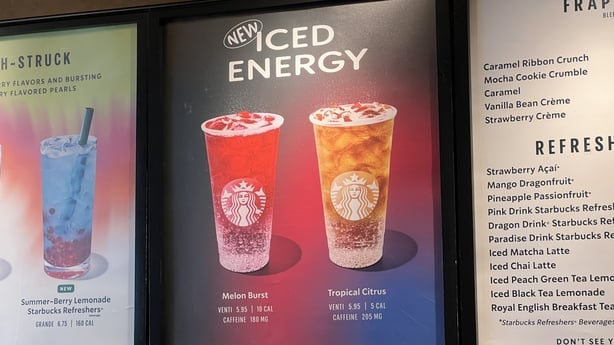
Yes – and this is a major problem for Starbucks, because it’s a difficult circle to square.
Personalisation was a big part of Schultz’s original pitch with Starbucks – it’s part of the reason why they started writing names on the cups. That was an attempt to emphasise that this drink was made just for you, exactly how you like it.
But giving customers pretty much unlimited personalisation options creates a problem, because it slows down the process of making the drink itself.
And that’s only gotten worse as they’ve introduced more and more types of drink to their menu.
So an americano, cappuccino, latte or flat white might all have a similar workflow – with slight variations from one to the other. But it’s a different ball game if you’re making a Frappuccino, and that’s different to an iced coffee, which is different to a cold brew, and that’s different again to a ‘refresher’, which is a fruit-based drink they sell.
That’s not to mention any tweaks customers might request; like syrups or cream, extra shots or decaf.
And that’s meant staff are spending more time making each drink – so customers are having to deal with longer, slower queues to get what they want.
And that also comes at a time when online orders have surged for Starbucks – which allows customers to order through the app, walk in, grab their coffee and leave.
That speed of service is a strong selling point. So now Starbucks has to figure out how it can speed up the coffee-making process so that it can get through queues faster than before, respond to the growing number of orders coming through the app that want a coffee right now… but also still make customers feel like they’re getting a personal service.
And it’s a much more competitive field now, isn’t it?
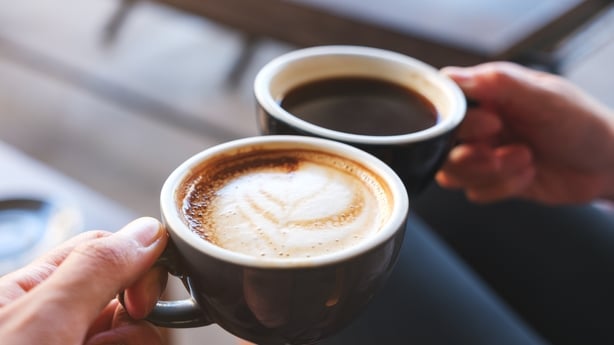
It really is – if you even think back 20 years, when Starbucks first came to Ireland, the coffee market has changed completely in that time.
Of course we had plenty of cafes back then – but we didn’t really have the chains that we have now.
Insomnia was still in its early days – Costa also arrived in Ireland in 2005. It was a good few years before Café Nero opened here.
But now there are chain coffee brands on pretty much every high street and in every shopping centre in the country.
At the same time we’ve also seen an explosion in the craft coffee sector – there are so many smaller outlets now who are focused on high-end coffee. They are showing customers how good coffee can be – and educating them on what to look for when buying for themselves.
And that has grown in tandem with an explosion in home coffee culture.
Back in the day when you were in someone’s house and they offered you a coffee, that probably meant Maxwell House. Nowadays it might mean they have a Nespresso machine – or they have a decent espresso machine of their own, and are able to make you something that easily rivals what you’d spend a fiver on in a café.
And that trend is being reflected around the world, really – Starbucks is facing competition from all angles.
Dunkin Donuts and even McDonald’s have been chipping away at the US coffee market for years, for example.
Starbucks once had huge expansion plans for China, but that’s come up against a domestic company called Lukin, which was only founded in 2017 but now has more outlets in the country than Starbucks.
So it’s a big task for their new CEO, Brian Niccol…
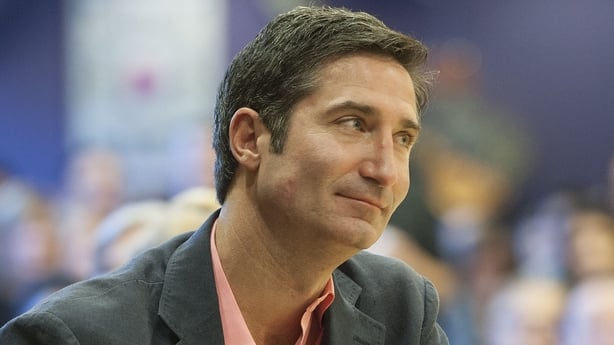
Yes – he has his work cut out for him alright.
And one of the first things he did was talk about fixing two major problems.
The first is making Starbucks a ‘third place’ again –he wants to redesign cafés to make them more comfortable, so people feel happy to sit and stay for longer.
At the same time he wants a clearer distinction between the sit-in and mobile order sides of the business – so maybe they’ll have a kind of fast-lane or hatch for the grab-and-go types.
And the other thing he wants to fix is the menu – he says it’s just too complicated and that’s causing problems for staff and customers.
But that may be more of a challenge than it seems, because all of those products are on there because they have a market and they make money.
In fairness, Niccol seems to know what he’s doing – he previously helped to turn around both Taco Bell and Chipotle following their own difficulties.
And he’s being well compensated for the work too.
He got a $10 million signing on bonus, and is getting $1.6 million a year as a salary, with a potential $23 million a year in share-based bonuses, and a further $3.6 million cash bonus if the company does well under his leadership.
If paid in full, he’ll get the equivalent of $113 million over the next four years.
The company also funded the setting up of a small remote working office – along with a personal assistant – in California, because that’s where he’s based.
And he has access to the company’s private jet so he can commute between California and Starbucks headquarters in Seattle.
Bear that in mind next time you feel bad about forgetting your reusable coffee cup.







